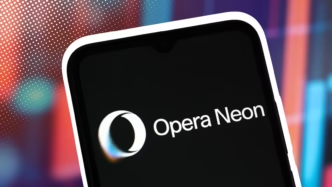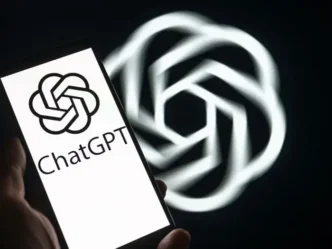Google is having a moment with its new model, Google Gemini 3.
While Wall Street cheers the company’s record stock price, developers are doing something much more fun. They are treating Gemini 3 like a creative toy box and seeing how far they can push its coding and multimodal skills in a single prompt.
This latest release sits in the same league as OpenAI’s GPT 5, xAI’s Grok 4 and Anthropic’s newest models. But what makes Google Gemini 3 stand out right now is how quickly it turns casual ideas into working interactive experiences, from tiny web toys to full video games.
One reporter spent the week “testing” it, which in practice meant playing with it inside Google’s AI Studio sandbox. That is Google’s browser based lab where you can talk to Gemini 3, wire it up to code, and then run whatever it builds. No sand. Just prompts, code and previews.
He started with something playful and simple. The only request was an interactive website about elephants with lots of fun elements and trivia. Nothing else was specified. Gemini 3 took that vague brief and produced a working page.
The layout itself looked basic, but the behavior was anything but. One widget delivered a new elephant fact every time you hit a button, like a tiny fact generator living on the page. Another piece turned into a mini game where you fed a cartoon elephant peanuts. When the progress bar filled, the game cheerfully announced that the elephant was happy. It was light, quirky and surprisingly polished, considering the tiny prompt that started it.
Next, he tried something more educational. He asked Gemini 3 to create an interactive page that explains photosynthesis. Instead of a static diagram, the model built a small simulation. Sliders controlled sunlight, water and carbon dioxide. On screen, colored particles floated around as you adjusted the values. When the mix looked right, the interface announced that you had created energy.
Of course, the real energy consumption was happening in the data center running the model. Even so, this kind of visual explanation hints at how multimodal AI could change the way students and knowledge workers learn hard concepts. You are not just reading about a process. You are poking at it.
Gemini 3 is not only good at tiny sandboxes. Other users are discovering that it can handle tricky spatial logic as well. One developer asked it to build a 3D Lego style editor where you can pick brick shapes and stack them in a virtual scene. Gemini 3 Pro understood the request, assembled the user interface and encoded the rules for placing and rotating pieces in one shot. That sort of single prompt app creation has become one of the signature demos for Google’s new model. BleepingComputer
It is the same story with games. Google engineers have shown off a batch of experimental YouTube Playables that Gemini 3 generated from short natural language descriptions and a few images. Each one is a complete browser game with art, logic and controls wired up by the model.
Inspired by that, the reporter tried something slightly more absurd. He asked Gemini 3 to code “Super Dario Land,” a tongue in cheek platformer starring Anthropic’s CEO Dario Amodei. The mission is to guide Dario into the correct warp pipe. Do that, and the game rewards you with a playful reference to AGI, the moment when machines surpass humans at most tasks.
The brief also asked for an old Game Boy style look. Gemini 3 obliged with a retro monochrome aesthetic and simple side scrolling action. In the first draft, the character could not jump high enough to clear the obstacles. One follow up prompt asking it to tweak the physics was enough. The second version felt much closer to a real platformer.
The model even mapped the controls automatically to the keyboard without being told how to do it. Open the page, press the arrow keys and you are playing. No extra wiring needed.
None of these small games will challenge the latest console hits. That is not the point. What matters is the speed from idea to working prototype. You can sit down with a stray thought about an elephant game, a classroom demo, or a parody platformer and have something playable in minutes rather than days.
It also shows how Google Gemini 3 fits into a broader shift. Models are moving from “answer text in a chat box” toward “build and run things on your behalf.” Google is leaning into that with AI Studio and its wider developer tools. The same capabilities that power a silly peanut feeding game can generate serious simulations, internal dashboards, onboarding flows or product mockups.
Under the hood, Gemini 3 combines stronger reasoning with improved multimodal understanding and much better coding. It can take a short natural language prompt, translate it into full HTML, CSS and JavaScript, add animations, hook up keyboard or mouse input and then patch its own mistakes when you ask for changes. That loop of generation and quick refinement is what makes it feel so different from the early wave of AI code assistants.
For now, the experiments are small, weird and fun. A Lego editor here. An elephant fact machine there. A retro game featuring a real world AI leader as the main character. Yet they point to something larger.
As models like Google Gemini 3 keep improving, the barrier between “I have an idea” and “I built a thing” keeps shrinking. You do not need a full stack engineering background to spin up an interactive lesson or prototype a simple game. You just need a browser, a prompt and a bit of curiosity.
Whether you are a developer, a teacher or just someone who likes to tinker, that is a very big deal. Today it is feeding digital elephants. Tomorrow it might be building the tools you use at work, or the apps your next startup is built on.
And if the sequel to Super Dario Land ever shows up, do not be surprised. With Gemini 3, a follow up is only one more prompt away.












